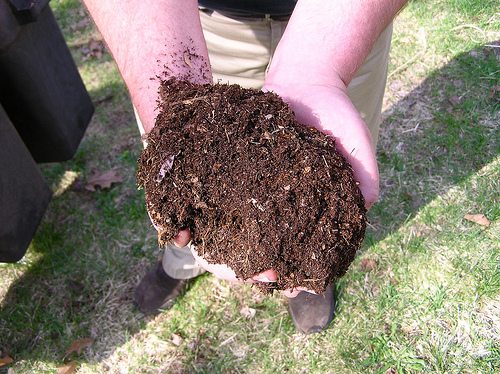Compost Source

Question from Sherri:
I live in Quartz Hill and I am looking for a source of plant based compost in this area. I have used Agromin, which is wonderful, but I would like to locate a local source.
Answer from Pat:
Since I answer questions from all over California, the USA and occasionally from foreign countries, I have no idea where people can purchase any kind of product, including compost, in any geographic area. I can, however, offer you certain guidelines.
Most bagged products marked “compost” in nurseries and garden supply stores are “plant based” as you call it. These days in areas of sparse rainfall, most of these ingredients are not green waste, but tend to be ground wood that one hopes is well-aged, but often not. I see nothing wrong with compost that as well as wood, contains manure. When you think about it manure is also “plant based” since a horse, for example does not eat meat. So despite the fact that manure has been digested inside the stomach and gut of an animal and come out the other end, it is nonetheless “plant based.” Also the digesting process results in nitrogen content, which when added to the wood shavings can help them to rot. (If you dig raw wood shavings into the ground and don’t add any nitrogen the shavings will sap soil of nitrogen in order to rot.)
In California this year we are supposed to be heading into ample rainfall this winter. If that actually happens, then nothing would improve garden soil better than stable manure, that is horse manure, placed on top of the ground so the winter rains can wash away any salts and also wash the nitrogen into the ground. Stable manure is often combined with straw and/or wood shavings, and this tends to decompose as it ages on top of the ground during the winter, while rains wash the nutrients it contains—nitrogen, phosphorus and potassium— into the ground. The whole thing can then be left as mulch or dug into the soil, if desired, in spring.
In some areas, landfills are a source of good quality compost made from garden waste trucked from households to the landfill or to another designated location, and piled up there to age and decompose. The negative aspect is that you never know what went into it, but for the most part it’s okay. The good thing about this compost is that it often is free and also often contains a great deal of mown lawn-grass clippings from hired gardeners who collect the clippings and send them to the dump. Cut green lawn grass is highly nitrogenous, thus the compost made from lawn clippings mixed with raked up leaves and twigs usually has enough nitrogen to heat up and rot, which is what one wants. Leaves and twigs are carbonaceous. It takes a long time for them to decomposed unless there is some source of nitrogen as well as moisture.
Photo by normanack 


